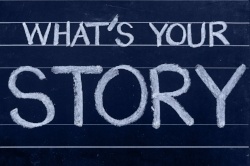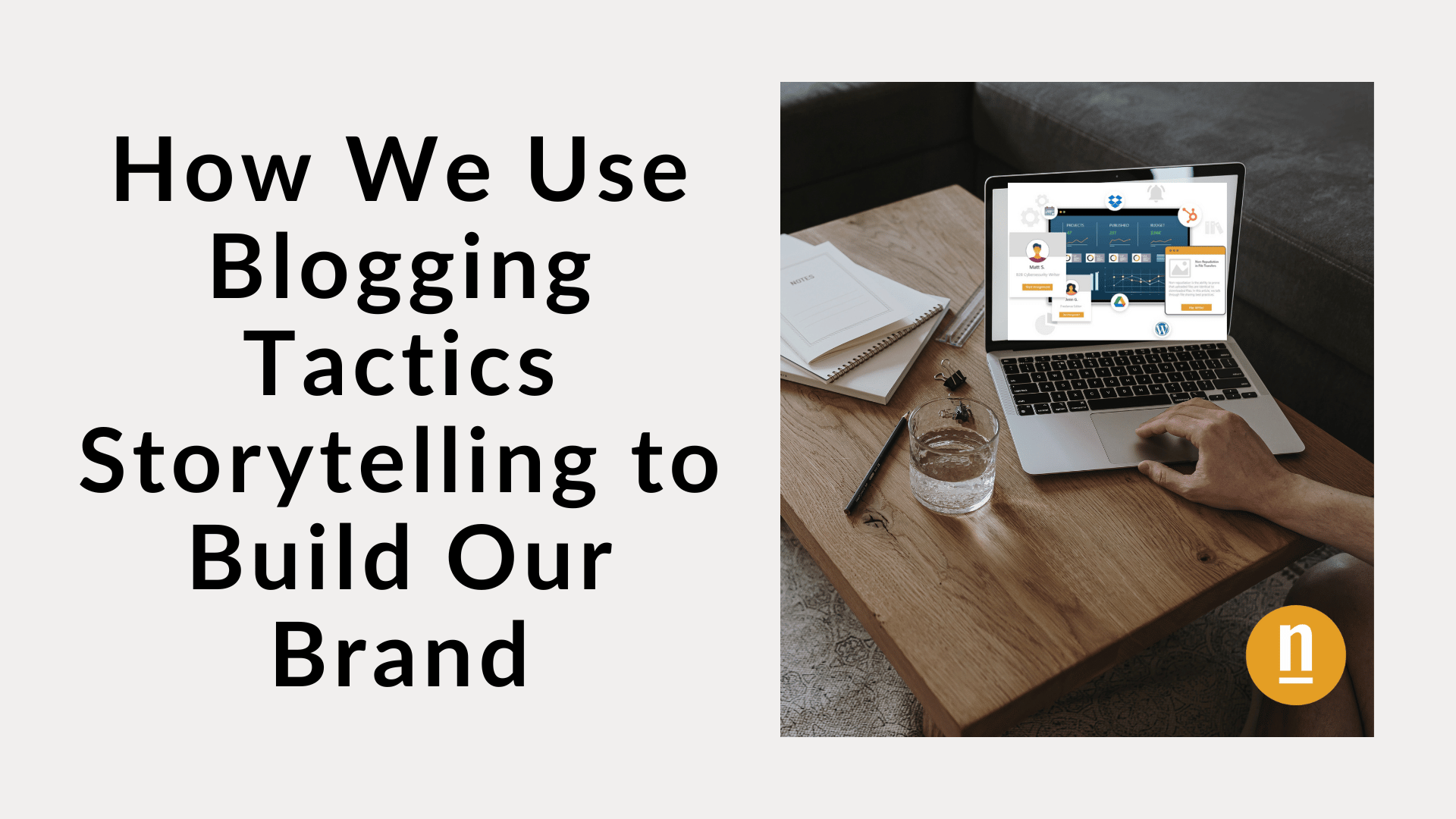 When you break down the steps of the standard inbound methodology, everything sounds so simple. Implementing blogging tactics simplifies it even more.
When you break down the steps of the standard inbound methodology, everything sounds so simple. Implementing blogging tactics simplifies it even more.
Your ideal buyer finds a link to your blog on Facebook that answers a specific question he has. he reads the blog and clicks on the call-to-action at the bottom to download your whitepaper. From there, you send him a few emails to nurture him even further until he’s ready to talk to a sales rep and eventually complete the sale.
Not a bad way to earn a buck!
Unfortunately, with the increased number of channels and devices your audience is communicating through, it rarely works out this way. Maybe the visitor is using Facebook on her phone and doesn’t have the time to finish your blog (Only 20% of people finish reading an article they arrived at through Facebook, compared to 35-50% on average). If you’re lucky, she’ll run across your Infographic on LinkedIn a few days later or find your YouTube video. Are you still talking about the same thing?
With the fragmented, multi-channel way your audience is now engaging with your brand, telling a single story is more important than ever.
What marketing experts are realizing is that this multi-channel marketing approach doesn’t make it more difficult to tell a single story. It actually makes it much easier to tell different parts of your story across many different mediums. Ryan Hanley calls it Breadcrumb Storytelling. Lee Odden calls it Transmedia Storytelling. Whatever you call it, it is an effective way to think about your content creation efforts.
Blog Tactics and The Power of Stories
Ever since cave paintings appeared 35,000 years ago, humans have been telling stories. It is still, and may always be, the best way to communicate information.
When we hear or read a story, our brains react differently than if we are absorbing facts or pictures. According to researchers in Spain, stories activate every part of the brain that we would use if we were actually experiencing the events of the story. When I tell you my fingers are flying over the keys of my keyboard and my eyes dart between my two monitors, your brain actually activates the motor cortex that coordinates the body’s movements.
According to Maya Angelou, “People will forget what you said, but people will never forget how you made them feel.” The reason she is dead on with this statement is that when we process a story, our brain activates a part called the Insula, which relates that story to past experiences and helps us feel the same emotions.
So What’s Your Story?
If you ever want to get someone stammering a bunch of random facts about their life, ask this question. When most people think of their story, they think of where they’re from, where they went to school and what jobs they’ve had. When most companies think of their story, they think of the product they sell, the products they previously sold, and the products they plan to sell in the future.
This is not your story.
Your story needs to relate to the deeper goals and motivations behind your company. What does your brand aspire to be? How do you really help people? Change “We provide teleconferencing software to mid-sized businesses” to “We saw and experienced the struggles of trying to do business remotely and don’t want other businesses to have to go through that.”
“The stories we tell literally make the world. If you want to change the world, you need to change your story. This truth applies both to individuals and institutions.” -Michael Margolis.
Blogging Tactics and Outlining the Elements of Your Story
The above example probably sounds a little fluffy to you. I added the Michael Margolis quote to really push it over the edge. “Changing the world” and drafting up a really engaging mission statement is all well and fine, but how does that actually affect my content marketing?
The key to effective multi-channel storytelling is to create really specific, granular aspects of your story.
Instead of trying to fit each of your blogs, social media posts, and other content into a vague mission statement, tell a specific chapter of your story every month, a specific section of that chapter every week, and a different element of that section in each of your individual content pieces.
To use the telecommunications example above here is a way to break down your story this month:
- Your brand’s story: “We saw and experienced the struggles of trying to do business remotely and don’t want other businesses to have to go through that.”
- This month’s story: “Your business needs to respond to the new way people are communicating.”
- This week’s story: “Predicting where the communications industry will be in 5 years.”
- Today’s Facebook post: “How do you think your business will communicate in five years? (We’ll share the top ideas later this week)”
- Tomorrow’s blog post: “Where 5 Top Industry Experts See Communications Heading”
- Friday’s YouTube Video: “Our CEO Answers Your Top Questions About the Future of Communications”
If you are in charge of the content calendar for a telecom company…you’re welcome. I accept gift baskets, but cash is preferable.
You can see how each breadcrumb in specific channels builds off and enhances the other content you’re creating that week. Not only does this enhance the overall effectiveness and depth of the content, but it also makes it, so your audience just has to continue on. Make it clear they are only getting one piece of the puzzle, and to hear more of the story, they need to continue on to your other channels.
Blogging Tactics and Planning Your Multi-Channel Content Approach
Let’s take a step back. Pretend at this point we didn’t get all ahead of ourselves talking about Facebook messages and blog posts. All you have is the story you want to tell this month and this week. Now ask yourself how you’d like to tell it.
- What channels are most effective for you?
- What channels does your audience respond to most?
- What channels are ideal for this specific story?
One part of this answer will depend greatly on your company and your budget. The breadcrumbs in this situation all cost a great deal of time and money to produce. While it would be awesome if you could spread your story across a hundred different channels, that is usually not an option. Focus only on the ones you have the knowledge, time, and budget to perform really well.
Here are some of the mediums that we use and the elements of our story we’ve found most effective for each. This month our blogging tactics were all about supporting our network of freelance writers.
Blog:
Your blog might be your most important storytelling medium. Tell your longer-form stories and provide the most information to your audience in a daily post (or more or less frequently). Choose an amount that you can sustain while still delivering high-quality content.
Our story: “Top 4 Freelance Writing Myths: Busted”
Social:
Your shorter-form content can be included here. Ask questions of your audience, tease upcoming topics and share as many pieces of your story as possible. Social is also a great medium to include the visual elements of your story in the form of infographics, SlideShares, memes, quotes, and other content.
Our story: “The Daily Routine of @dmscott and 4 other successful writers
Email:
Your regular email newsletter is a great place to speak candidly about the story you are telling this month. Your subscribers should be your most loyal and active audience. Tell them your goal and show them how they can get involved.
(Want to know what we sent this month? Subscribe to our newsletter through the form at the bottom of this page!)
Whitepapers/Premium Content:
We shoot for one piece of premium content that supports our story each month. Outlining this early in the process will help you define what elements of your story are most important and the best ways to convey them to your audience.
Our story: “The Freelance Writer’s Guide to Pitching Content Ideas”
Guest Posts:
These are great ways to expand your audience and draw in new people to your story. Because they are usually a new audience, try to offer a more comprehensive view of the story you are trying to tell but leave them ready to collect more information through your other mediums.
Our story: HubSpot Agency Post: “It’s Time to Come Clean About Your Agency’s Freelancers (and Their Value)”
Mix in whatever other content pieces work best for your business, whether they are case studies, videos, podcasts, webinars, or anything else, as long as it supports your overall brand story.
In each piece of content, reference other bits of the story you’ve already published and finish by teasing what parts they can expect next. This will give them somewhere to go to continue the conversation.
Final Thoughts on Blogging Tactics
With so much content being created and so many ways to consume it, it’s becoming harder than ever to get your message across. The solution? Simplify your message. Instead of trying to shout a hundred different ideas across all of your channels, choose one very simple idea and tell it in every way you know how. That way, even if it takes a couple of tweets, a blog, and a whitepaper to finally sink in, your audience is receiving your message.
For more insights on how to make this work for your business, check out tomorrow’s “Brands That Killed It With Content” post, where the focus will be on companies doing storytelling really well.
How does your brand use blogging tactics to get your company’s message across? Share your experiences on our LinkedIn page!
